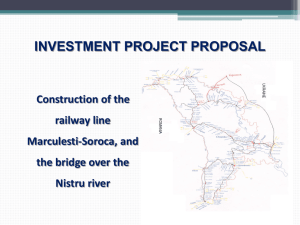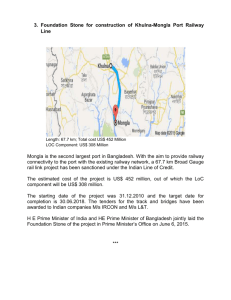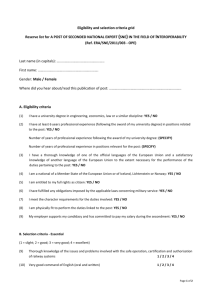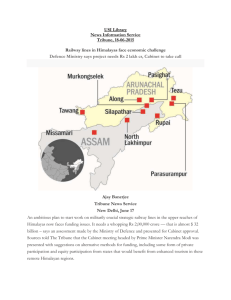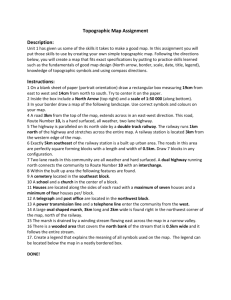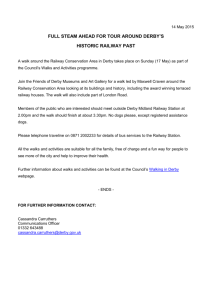Erection of traffic signs on railway land ORM 1811.4 Word
advertisement
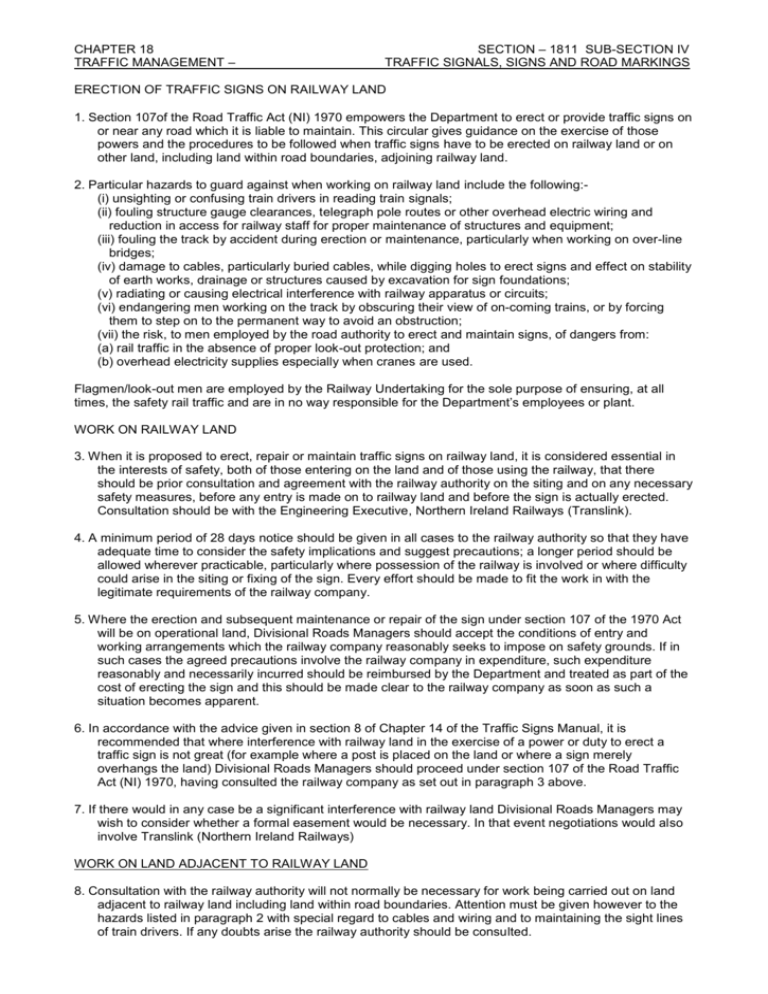
CHAPTER 18 TRAFFIC MANAGEMENT – SECTION – 1811 SUB-SECTION IV TRAFFIC SIGNALS, SIGNS AND ROAD MARKINGS ERECTION OF TRAFFIC SIGNS ON RAILWAY LAND 1. Section 107of the Road Traffic Act (NI) 1970 empowers the Department to erect or provide traffic signs on or near any road which it is liable to maintain. This circular gives guidance on the exercise of those powers and the procedures to be followed when traffic signs have to be erected on railway land or on other land, including land within road boundaries, adjoining railway land. 2. Particular hazards to guard against when working on railway land include the following:(i) unsighting or confusing train drivers in reading train signals; (ii) fouling structure gauge clearances, telegraph pole routes or other overhead electric wiring and reduction in access for railway staff for proper maintenance of structures and equipment; (iii) fouling the track by accident during erection or maintenance, particularly when working on over-line bridges; (iv) damage to cables, particularly buried cables, while digging holes to erect signs and effect on stability of earth works, drainage or structures caused by excavation for sign foundations; (v) radiating or causing electrical interference with railway apparatus or circuits; (vi) endangering men working on the track by obscuring their view of on-coming trains, or by forcing them to step on to the permanent way to avoid an obstruction; (vii) the risk, to men employed by the road authority to erect and maintain signs, of dangers from: (a) rail traffic in the absence of proper look-out protection; and (b) overhead electricity supplies especially when cranes are used. Flagmen/look-out men are employed by the Railway Undertaking for the sole purpose of ensuring, at all times, the safety rail traffic and are in no way responsible for the Department’s employees or plant. WORK ON RAILWAY LAND 3. When it is proposed to erect, repair or maintain traffic signs on railway land, it is considered essential in the interests of safety, both of those entering on the land and of those using the railway, that there should be prior consultation and agreement with the railway authority on the siting and on any necessary safety measures, before any entry is made on to railway land and before the sign is actually erected. Consultation should be with the Engineering Executive, Northern Ireland Railways (Translink). 4. A minimum period of 28 days notice should be given in all cases to the railway authority so that they have adequate time to consider the safety implications and suggest precautions; a longer period should be allowed wherever practicable, particularly where possession of the railway is involved or where difficulty could arise in the siting or fixing of the sign. Every effort should be made to fit the work in with the legitimate requirements of the railway company. 5. Where the erection and subsequent maintenance or repair of the sign under section 107 of the 1970 Act will be on operational land, Divisional Roads Managers should accept the conditions of entry and working arrangements which the railway company reasonably seeks to impose on safety grounds. If in such cases the agreed precautions involve the railway company in expenditure, such expenditure reasonably and necessarily incurred should be reimbursed by the Department and treated as part of the cost of erecting the sign and this should be made clear to the railway company as soon as such a situation becomes apparent. 6. In accordance with the advice given in section 8 of Chapter 14 of the Traffic Signs Manual, it is recommended that where interference with railway land in the exercise of a power or duty to erect a traffic sign is not great (for example where a post is placed on the land or where a sign merely overhangs the land) Divisional Roads Managers should proceed under section 107 of the Road Traffic Act (NI) 1970, having consulted the railway company as set out in paragraph 3 above. 7. If there would in any case be a significant interference with railway land Divisional Roads Managers may wish to consider whether a formal easement would be necessary. In that event negotiations would also involve Translink (Northern Ireland Railways) WORK ON LAND ADJACENT TO RAILWAY LAND 8. Consultation with the railway authority will not normally be necessary for work being carried out on land adjacent to railway land including land within road boundaries. Attention must be given however to the hazards listed in paragraph 2 with special regard to cables and wiring and to maintaining the sight lines of train drivers. If any doubts arise the railway authority should be consulted.

